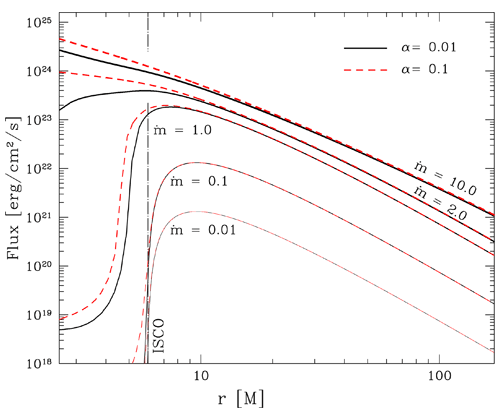 |
|
Figure 10: Flux profiles for different mass accretion rates in the case of a non-rotating black hole
and two values of
 : 0.01 (black solid), 0.1 (red dashed lines). For each value of : 0.01 (black solid), 0.1 (red dashed lines). For each value of  there are five
lines corresponding to the following mass accretion rates: there are five
lines corresponding to the following mass accretion rates:  = 0.01, 0.1, 1.0, 2.0 and 10.0 (as a
reminder, = 0.01, 0.1, 1.0, 2.0 and 10.0 (as a
reminder,  ). The black hole mass is ). The black hole mass is  . Image reproduced by permission
from [270], copyright by ESO. . Image reproduced by permission
from [270], copyright by ESO. |
- Home
- Articles
sidebar
"Foundations of Black Hole Accretion Disk Theory"
Marek A. Abramowicz and P. Chris Fragile

